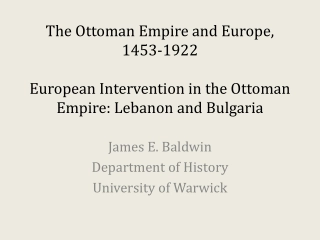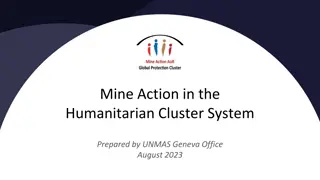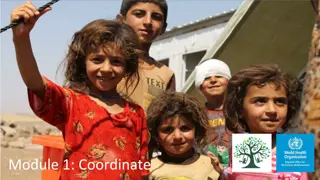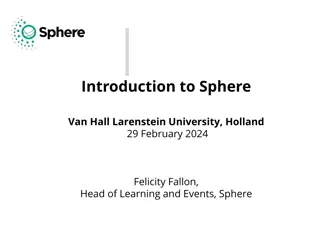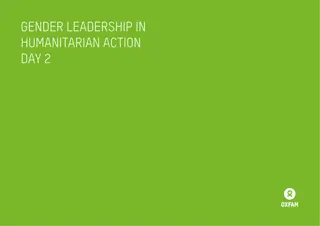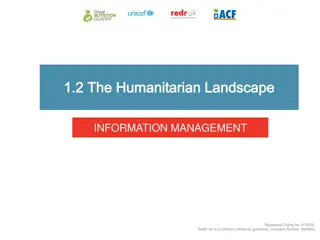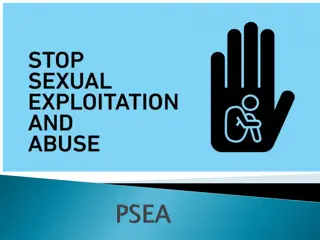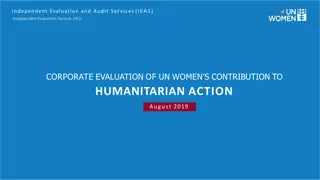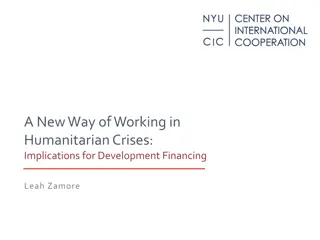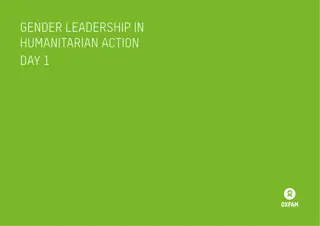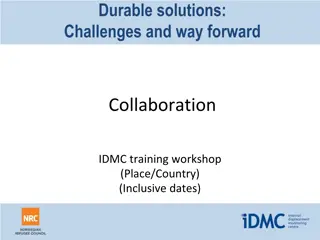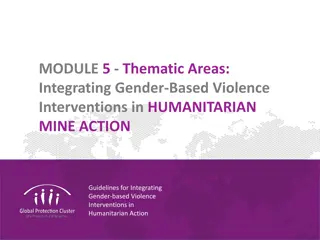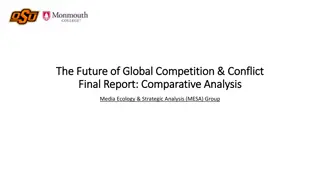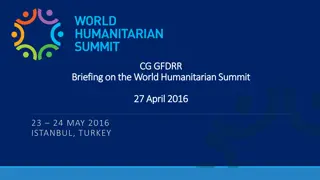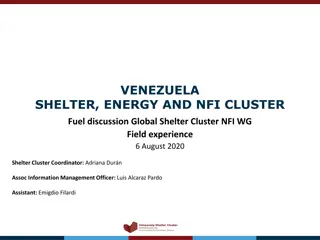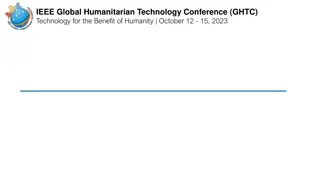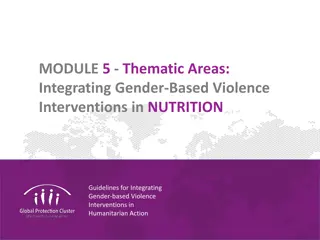Global Humanitarian Assistance Report 2019 Key Findings
The Global Humanitarian Assistance Report 2019 explores key findings regarding international humanitarian assistance, multi-year funding growth, funding to UN agencies, cash and voucher programs, and direct funding to local and national actors. The report highlights the challenges and disparities in global humanitarian efforts, emphasizing the need for continued support to address recurrent crises and extreme poverty in vulnerable countries.
Download Presentation

Please find below an Image/Link to download the presentation.
The content on the website is provided AS IS for your information and personal use only. It may not be sold, licensed, or shared on other websites without obtaining consent from the author.If you encounter any issues during the download, it is possible that the publisher has removed the file from their server.
You are allowed to download the files provided on this website for personal or commercial use, subject to the condition that they are used lawfully. All files are the property of their respective owners.
The content on the website is provided AS IS for your information and personal use only. It may not be sold, licensed, or shared on other websites without obtaining consent from the author.
E N D
Presentation Transcript
Global Humanitarian Assistance Report 2019: key findings Angus Urquhart Development Initiatives
Countries with recurrent crises are home to less than a tenth of the global population, but more than a third of people in extreme poverty
International humanitarian assistance increases but pace of growth slows 35 Total 28.9 28.6 30 26.5 Governments and EU institutions 25.2 6.3 6.6 25 22.2 5.6 5.9 Private US$ billions 20 4.7 15 22.6 21.9 20.9 10 19.3 17.5 5 0 2014 2015 2016 2017 2018 global humanitarian assistance / devinit.org
Multi-year funding grows markedly by volume but more slowly as a proportion of total funding Multi-year contributions as % of total funding 60% 14 12.9 12.6 Multi-year contributions as % of total funding 12 50% Single-year contributions 10 37% 40% 8.4 Multi-year contributions US$ billions 33% 8 32% 30% 8.1 8.4 6 5.7 20% 4 4.8 10% 4.2 2 2.7 0% 0 2016 2017 2018 global humanitarian assistance / devinit.org
Unearmarked funding to UN increases in total but continues to fall in relative terms 18 30% Unearmarked funding as % of total 16 25% 14 Earmarked funding 20% 19% 19% 12 20% 18% US$ billions 17% Unearmarked 10 13.5 15% 12.3 11.6 8 10.3 9.3 6 10% 4 5% 2 2.8 2.7 2.7 2.6 2.2 0 0% 2014 2015 2016 2017 2018 global humanitarian assistance / devinit.org
Volume of cash and voucher programmes reaches new high 5.0 4.7 0.01 Other 4.3 4.5 0.9 0.1 4.0 NGOs 0.9 3.5 1.0 RCRC 2.8 US$ billions 3.0 0.004 1.0 UN agencies 2.5 0.7 0.004 2.0 0.1 2.0 0.5 1.5 2.8 0.1 2.2 1.0 2.0 1.4 0.5 0 2015 2016 2017 2018 global humanitarian assistance / devinit.org
Direct funding to local and national actors grows in 2018 but remains a small proportion of all funding RCRC National Societies 0.1% Southern international NGOs 0.3% Local NGOs 0.1% National NGOs 0.3% International responders 96% Local and national responders 3.1% Internationally affiliated NGOs 0.1% National governments 2.6% National foundations 0.002% National academia/think tanks/research institutions 0.003% National private sector corporations 0.1% global humanitarian assistance / devinit.org
Both domestic and international resources are lower per person in countries in crisis Long-term debt (commercial) US$22 per person Developmental ODA gross US$39 per person Remittances US$72 per person Official humanitarian assistance US$16 per person Foreign direct investment US$23 per person 11% 20% Other official flows gross US$4.8 per person 37% 8% 12% 2.4% Peacekeeping US$8.1 per person Net short-term debt US$2.3 per person 1.2% 4.1% Long-term debt (official) US$4.2 per person Net portfolio equity US$4.3 per person 2.2% 2.2% global humanitarian assistance / devinit.org
Foreign direct investment is volatile and inflows can fall rapidly in the early years of a protracted crisis response % change in FDI since year before appeal 10% Lower middle income countries 7% Year 1 Year 2 Year 3 Year 4 Year 5 0 -3% -6% -2% -11% Low income countries -16% -10% -21% -20% -42% -43% -48% -30% -40% -50% -60% global humanitarian assistance / devinit.org
International funding related to disaster risk reduction increasingly targets high-risk countries 46 41 43 48 97 101 104 100 6,000 5,69 4 5,274 257 306 4,7 63 5,000 757 4,671 4,382 205 763 4,296 311 67 128 128 289 3,87 7 4,000 318 508 3,512 US$ millions 162 83 465 467 3,000 4,632 4,385 4,254 4,254 2,000 3,849 3,669 3,329 2,883 1,000 0 High risk Other High risk Other High risk Other High risk Other 2014 2015 2016 2017 global humanitarian assistance / devinit.org
Conclusion Growth in international humanitarian assistance but slowing and still inadequate to meet need Mixed progress in adapting to more efficient and effective programming significant gaps in reporting and evidence of impact. New financing mechanisms are being developed and new sources of funding accessed more evidence needed on targeting, impact and coordination global humanitarian assistance / devinit.org


